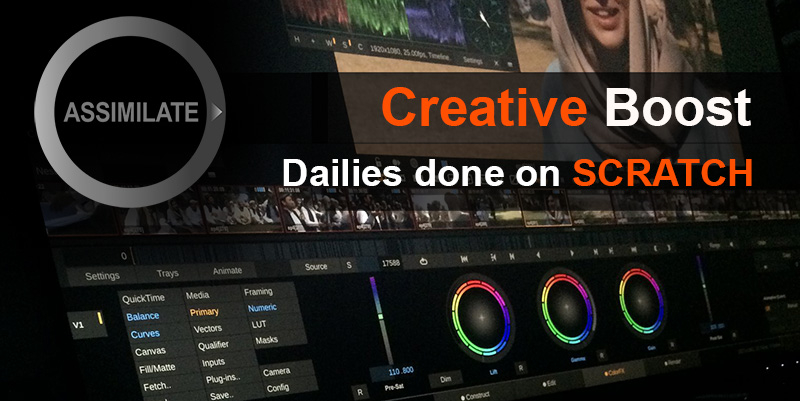Search the Community
Showing results for tags 'luts'.
-
What is your workflow for using Film Print Emulation LUTs(eg. Kodak Vision 2383)
Anonymous posted a topic in DaVinci Resolve
There are a set of LUTs inside the Film Looks folder in DaVinci resolve. How should one go about using it in their color grading workflow? I generally use a Color Space Transform node to input gamma as Rec. 709 and out gamma as Cineon Film Log and then place the FPE LUT(This is done in the last 2 nodes). In nodes prior to the color space transform, I do LOG to Rec. 709 and secondary grading.- 13 replies
-
We create unique looks by color managed workflow in resolve and other grading software's and we export luts from the looks created but if we try to apply that lut to different camera profiles or other footages we wont get good result for the look it will be just distracted anyway. So how to create unique creative luts that can be applied to any footages/camera profiles to save the most of our time for future projects , what are the pro techniques to create creative lut properly or do any other software's required to create or what is the proper technique ? This is most important query most of them are worried please suggest anyone or i request lowepost to make pro course on creating creative luts .
-
- davinciresolve
- luts
-
(and 2 more)
Tagged with:
-
Online Session hosted by Mazze Aderhold Wednesday, May 20th 10am Los Angeles | 1pm New York | 7pm Berlin Register here: https://www.assimilateinc.com/join-webinar/ What is this online event about? This online session we will not only highlight why you want to do dailies in SCRATCH, but also show you how to do it. Mazze will walk you through the complete dailies process – from import to export, incl. all the advantages that come with it. You’ll walk out of this online session, fully prepared to start a dailies job on SCRATCH. Also we will have Ansgar from the COPRA team to show the latest features for v5 their web dailies platform! Dailies in SCRATCH: • settings & project creation • importing clips • offloading • import of ALE/EDL • Media Browser Tool • LUT/CDL loading & matching • audio sync (TC-based + manual sync) incl. LTC • metadata QC + Scene/Take • dailies grading + RAW decode options • color management (i.e. monitor HDR and SDR side by side) • timeline automation • output tree with different deliverables and metadata burn-ins • output filenaming + preset creation • render check / QC reports • import offline clips into Avid, incl. all clip metadata • COPRA Dailies Platform - new Version Demo • Q&A The event is free for all attendees. The content is designed for DITs, colorists and finishing artists. We will also record the event for you to watch later. Please send your questions, comments and feedback to: info@assimilateinc.com Cheers, Mazze
- 2 replies
-
- transcoding
- metadata
-
(and 7 more)
Tagged with:
-
Hi guys, I am having sleepless nights not being able to figure out how to achieve this look: https://www.youtube.com/watch?v=TcJ80-B98Qs&t=541s (from 12 seconds onwards, but particularly the outdoors parts around 8 minutes). I'm shooting with the same camera, Sony A7SII, in CINE4. Obviously he has a few separate presets set up to be able to produce a quality video every day. The jist of the grade is cinematic, but not orange and teal, in fact I'm not seeing much colour in the shadows at all. I'm noticing lots of bloom from lights in the background, blacks are very black but the overall look doesn't seem that high contrast to me. Also, the image seems incredibly soft, completely different to the image I can make. (Maybe a purposefully dirty lens? - Vaseline on a filter?) If anyone can give me some pointers in how to get closer to this look it would be a huge help, I must be missing some really obvious things. Or even point me to some similar LUTS as a starting point if they exist. Huge thanks and I apologize if I'm using the wrong terminology.
-
Hello, everyone. I'm a Ravensbourne student currently studying Editing and Post Production. As I'm in my final year, I'm currently in the process of writing my dissertation, which mainly investigates how advancements in digital technologies have expanded the creative capabilities of a colourist. If any of you have time, I would love it if you could answer some of the questions I've added below. These answers will definitely help expand/reconsider/polish a lot of the points I've already made. You do not need to answer them all, but if you could answer as many as you can I would really appreciate it. Additionally, if you have any interesting points you'd like to add, or want to suggest any more questions, do not hesitate to let me know. My email is francocuen@gmail.com Why do you think colour is such an important tool in filmmaking? Why do you think black and white was not enough? Do you think being colourist is primarily a technical or creative role? Where do you see the future of colour grading headed? What are some of the new technologies/tools that the industry has to start to consider looking into? What do you think makes colour grading an art in itself? What is your opinion on HDR? What are your opinion on LUTS As third-party plugins for NLE and colour correction software becomes more user-friendly, making it easier for anyone to learn and apply colour grading into their work, why do you think a colourist will still be relevant in 5 years time?
-
- colour grading
- resolve
-
(and 6 more)
Tagged with:
-
I've been using LUTs from different sources and for different purposes over the short time period I've spent learning a thing or two about color grading, and I was wondering what is the "standard" procedure for creating a LUT. I'm aware that several programs like Resolve or Photoshop are able to create one, and until now I've used those programs to cook my own LUTs, but I'm unsure whether that's "correct" and/or advisable, or whether there are other more professional ways to do it. I hope I was able to clearly express the question, please let me know if that is not the case.




